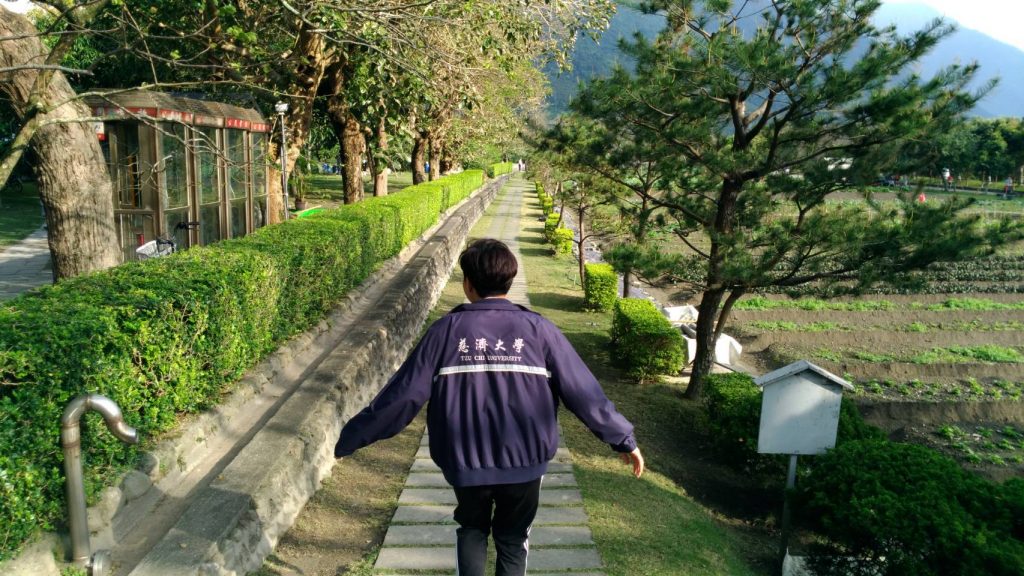Our School’s Motto:Kindness, Compassion, Joy, and Giving
In accordance with the 4 pillars of the True Buddha Dharma: indiscriminate loving kindness, boundless compassion, joyous gratitude, and mindful equanimity.
Kindness
Unconditional loving kindness, or the quality of enlightened benevolence towards all beings, describes the accumulation of merit through the practice of virtuous deeds reaching far beyond oneself. Buddhist kindness embodies the great love a mother has for her own child, considering their needs foremost in the way that would be of greatest benefit to their development (at her own expense if needed); and applies this approach indiscriminately to all sentient beings as if they were one’s own family.
Compassion
Also referred to as “great grief of the same body,” compassion denotes the visceral empathy one has for another’s suffering as if it were their own. To cultivate compassion means to dive profoundly into the intrinsic connection of all beings in a holistic recognition of oneness: that “other” is an illusion, and one is the same and not separate. Compassion naturally derives from the heart out of selfless great love, generated in the act of placing oneself in the shoes of “another,” and through openness, allowing their pain to reverberate through one’s own being without condition. Then, through the release and honoring of that suffering, relief is found in the emptiness of its wake. To undertake such a journey with humility and lucidity on behalf of another for the welfare of all beings; to truly meet the need of the moment with full presence without moving from its hurt or agony; that is compassion.
Joy
“Joy” refers to a heightened appreciation of the moment due to profound presence cultivated through the discipline of performing virtuous deeds with a pure mind for the good of all. Lucid of the impermanence of good fortune, everything is considered a “gift.” Implied is the illusory, interchangeable nature of suffering and happiness within samsara (i.e. the “Wheel of Suffering” or “6 Realms of Rebirth”) and that irrespective of karma (i.e. “The Scientific Law of Cause and Effect”) one is always free to cultivate themselves and practice the True Buddha Dharma accordingly.
Giving
Selfless generosity is the core of all compassionate activity, and the foundation of every Tzu Chi mission. To give unconditionally without expectation for the welfare of all is a virtuous practice conscientious of natural justice. Realizing the depths of privation in the world, one is instinctively moved to help however feasible. Thus, Dharma practices are concluded through a “dedication of merit for the welfare of all sentient beings;” an act freely releasing good karma accumulated through pure acts to relieve suffering, save living beings, and restore balance to the world. Manifesting “a heart of equanimity,” one is able to free themselves of the suffering of attachment so as to truly make an impact in alignment with the greatest good.
Flowers and fruits grow together
Simultaneously bearing the lotus fruit and flower, our emblem symbolizes the difference we can make in the world by planting seeds of goodness. Only with good seeds can the flowers blossom and bear fruit; thus, to harvest the fruits of realization requires cultivation.
The Lotus in Full Bloom
A lotus in full bloom symbolizes enlightenment: this luminous flower flourishes in mud, and though living beings are likewise rooted in the mud of suffering, we may like the lotus, yet find the nourishment to “bloom.”
8 is a “Noble” Number
The eight petals symbolize the “Eightfold Path” of “right view, right thinking, right speech, right action, right livelihood, right effort, right mindfulness, and right concentration”
Knowledge is the foundation
Growing within the fruit of the lotus as the base of the structure, an open book symbolizes a scholarly palace of learning.
The Silhouette of Humanism
Imitating the Chinese character for “human,” the roof of Jingsi Abode compassionately shelters humanity.
Education of The Whole Person
The character “大,” meaning “university” in seal script, is drawn to resemble a person. The character for “big” is also present, meant to symbolize a “whole person.” This refers to a holistic regard for the health and development of each individual as a whole, skillfully cultivating talent alongside health and morality.
The Swastika atop the Roof
The Swastika is an originally Buddhist symbol representing the auspicious footsteps of the Buddha. It is homologous to the turning of a Dharma wheel, generating protection and blessings for the welfare of all sentient beings through purifying prayer.
Formal Wear of Our School
Our School Uniforms
We have a clean-cut Dress Code for weekly meetings, ceremonies, formal gatherings, and group lectures off-campus. Girls wear coordinated hair styles, while Boys wear ties.
School Jacket

- Our school’s official Dress Code policy requires the wearing of school uniforms from 8:00 am to 5:30 pm (excluding holidays). We provide seasonal casual wear in our uniform options.
- Clothing Regulations:
- Weekly meetings, formal assemblies, and off-campus group lectures require uniforms (boys must wear a tie with Winter uniforms.)
- Wearing a full set is considered normal.
- The wearing of slippers should be limited to the dorms.
- For supplementary uniforms: Please fill in the application form in the student support group within the announcement period (the second week of each semester).
- According to our uniform subsidy rules: freshmen must purchase their own casual Winter and Summer uniforms when they first enter, but will receive a subsidy of 50% of the cost from the school. Those arriving from low-income households or financial difficulties can fully subsidize school uniform funds after the application is approved.
